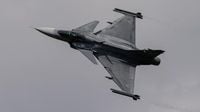NATO is set to launch one of its largest nuclear deterrence exercises in recent memory, as the alliance’s annual Steadfast Noon drill kicks off on Monday, October 13, 2025. This year’s exercise, led by the Netherlands, brings together 71 aircraft from 14 NATO countries, mobilizing around 2,000 personnel in a display of unity and readiness amid a backdrop of global uncertainty and heightened security concerns in Europe.
For more than a decade, Steadfast Noon has been a fixture on NATO’s autumn calendar, but this year’s iteration stands out for several reasons. According to Defense News, it features the highest number of participating aircraft in recent years, with operations centered around the North Sea and the Netherlands’ Volkel Air Base serving as the main hub. Supporting elements will operate from RAF Lakenheath in the United Kingdom, Kleine Brogel Air Base in Belgium, and Fighter Wing Skrydstrup in Denmark.
The exercise is not just about flying sorties over northern Europe. A key focus this year is the protection of nuclear assets on the ground—a response, in part, to a series of mysterious drone incidents near military facilities in Belgium and Denmark, some of which have been blamed on Russia. As Col. Daniel Bunch, Chief of NATO Nuclear Operations at Supreme Headquarters Allied Powers Europe, told reporters, “There are a variety of different threats that we assess and that we must defend against because these are highly protected assets that require the utmost security and safety.” He acknowledged the uptick in drone incursions, adding, “The more frequent incursions are something we’re obviously keeping an eye on. Ultimately, we’re going to stay one step ahead of the adversary.”
Despite the exercise’s scale and timing, NATO officials have gone out of their way to stress that Steadfast Noon is a routine drill, not a response to any specific international event or directed at any particular country. “It’s a yearly training and it is regular, and we need to do this because it helps us to make sure that our nuclear deterrent remains as credible and as safe and as secure and as effective as possible,” NATO Secretary General Mark Rutte said in a video address on Friday. “It also sends a clear signal to any potential adversary that we will and can protect and defend all allies against all threats.”
No live nuclear weapons or live munitions will be used during the two-week exercise. Instead, bomber aircraft and fighter jets certified to carry nuclear warheads will participate in simulated missions. The United States is providing four F-35 jets in the dual-capable aircraft role for the first time, a position previously held by the F-15E Strike Eagle. Refueling planes, reconnaissance and intelligence systems, and electronic warfare equipment will also play significant roles in the exercise, according to AP and Defense News.
This year’s Steadfast Noon is also notable for the inclusion of Sweden, which will participate for the first time since joining NATO in March 2024. For over 200 years, Sweden maintained a policy of military non-alignment and avoided nuclear entanglements. The Swedish government’s decision to deploy Saab Gripen fighter jets to the exercise marks a historic shift. As Prime Minister Ulf Kristersson stated, “In an increasingly uncertain world, NATO needs a credible nuclear capability to prevent attacks against the Alliance. Steadfast Noon contributes to ensuring this.”
Sweden’s participation, alongside Finland—which joined the exercise last year with F/A-18 Hornets—signals a new era for the alliance’s northern flank. Both countries’ jets will not handle nuclear weapons directly; instead, they will practice conventional support roles, such as escorting aircraft loaded with simulated nuclear weapons. This approach is part of NATO’s SNOWCAT strategy (Support of Nuclear Operations with Conventional Air Tactics), which allows allies to contribute according to their own political and operational preferences. As Sweden’s Defense Minister Pål Jonson put it, “By participating with conventional Gripen combat aircraft in Steadfast Noon, Sweden contributes to ensuring that NATO’s nuclear deterrence remains credible, robust, and effective.”
The United States and Britain continue to provide the backbone of NATO’s nuclear deterrence, with the U.S. maintaining B-61 nuclear weapons at airbases in Germany, Belgium, the Netherlands, Italy, and Turkey. These weapons are kept under strict U.S. custody and are only deliverable by specially certified allied and American aircraft, in compliance with the Non-Proliferation Treaty. The most recent version, the B61-12 bomb, completed production at the start of 2025, with certification expanding to various aircraft such as the F-35A, F-15E, B-2, F-16, and Germany’s PA-200 Tornado. A higher-yield B61-13 variant is scheduled for production in fiscal 2026, according to Stockholm’s International Peace Research Institute and the National Nuclear Security Administration.
Germany will send three Panavia Tornado jets and four jamming aircraft, while Poland is contributing three F-16s and Finland four F-18s. The Netherlands will deploy Dutch F-35 jets, and the United States will send additional tankers and support aircraft. In total, at least 71 aircraft will participate, compared to around 60 in previous years. France, which maintains its nuclear forces outside NATO’s command structure, will not participate, though discussions about closer nuclear cooperation between France and the United Kingdom are ongoing.
Part of the rationale behind Steadfast Noon is to reassure both the alliance’s members and the broader public of NATO’s commitment to credible nuclear deterrence. As NATO’s head of nuclear policy, Jim Stokes, explained, “We want to make sure that folks understand that we’re a responsible nuclear alliance. We are not acting aggressively, we are not using irresponsible nuclear rhetoric. We’re also not doing anything other than ensuring that we are prepared to defend ourselves if we need to, because NATO is a defensive alliance.”
The Washington Summit declaration, agreed upon by alliance leaders last year, reaffirms that “the fundamental purpose of NATO’s nuclear capability is to preserve peace, prevent coercion and deter aggression.” It goes on to state, “As long as nuclear weapons exist, NATO will remain a nuclear alliance.”
While Russia’s Deputy Foreign Minister Sergey Vershinin warned earlier this year of a high risk of direct military confrontation between nuclear powers, NATO officials insist they have not observed any recent changes in Russia’s nuclear posture. Still, the alliance continues to monitor Russian military activities closely, particularly the use of dual-capable missiles in Ukraine that could theoretically be fitted with nuclear warheads.
As Steadfast Noon gets underway, its message is both clear and complex: NATO remains committed to the safety, security, and credibility of its nuclear deterrence, while also adapting to new threats and expanding its circle of allies. The exercise is designed not to escalate tensions, but to ensure that, should the need ever arise, the alliance is ready to defend itself and its members—no matter the threat.


